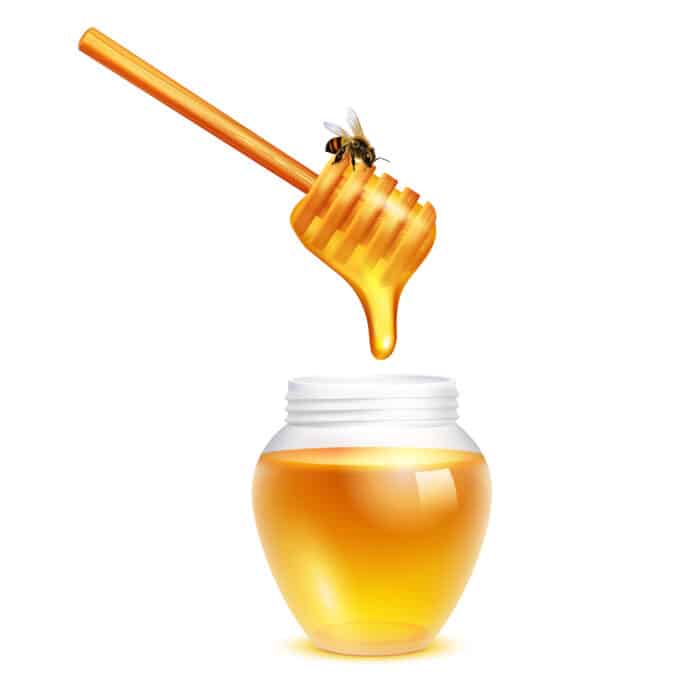Honey can relieve a variety of ailments including allergies, coughs, fatigue, pain, and stress.
What bees do and how they do it is nothing short of miraculous. Produced in the honey sacs of bees, that ooey, gooey, sticky golden liquid has been loved by human beings for eons.
Legend has it that it was first cultivated in Valencia, Spain. Even the ancient Egyptians and Greeks offered this dark golden liquid to their gods. It’s so old it’s even mentioned frequently in the Bible and is probably the oldest known sweetener.
According to the National Honey Board, there are over 300 different varieties of honey produced worldwide. All honey has a sweet taste, but several key factors make each type of honey unique, such as color and flavor profile.
Honey starts as flower nectar collected by bees, which then gets broken down into simple sugars stored inside the honeycomb. The design of the honeycomb and constant fanning of the bees’ wings causes evaporation, which creates sweet liquid honey. Honey’s color and flavor depend entirely on the type of nectar collected by the bees.
While the ancient Egyptians and Greeks were the first to master domestic honey production on a large scale, they were not the first to capitalize on the hard work of honeybees. This belongs to the ancient people of Valencia, Spain, who were robbing beehives approximately 5,000 years prior to the Egyptians and Greeks.
Honey was recognized thousands of years ago for its healing properties and, to this day, is still used routinely for many ailments. But before you go rushing to the kitchen, remember that most supermarket honey is processed and does not have the medicinal values that local, raw, unprocessed honey possesses. Raw honey has antibacterial properties and a unique pH balance that promotes oxygen and healing compounds to a wound.
Tips for Using Honey for Medicinal Purposes
Wounds
Always start with clean hands and applicators, such as sterile gauze and cotton tips. Apply the honey to the dressing first, then apply the dressing to the skin. Honey doesn’t stick to healing tissue like bandages do, doesn’t cause allergic reactions, helps prevent scarring, and removes debris from wounds. Also, bacteria have shown no resistance to its antibiotic properties.
Mild Burns
Pour tap water immediately on burns to reduce the temperature. Apply a dash of honey directly onto the burn or soaked in sterile gauze before application. Honey’s antibacterial and anti-inflammatory properties will soothe the burn.
Helps Treat Colds and Cough
Honey is an effective cough suppressant and can reduce nighttime coughing and improve sleep. It clears the congestion in the throat and prevents dehydration. Drinking tea or warm lemon water mixed with honey is also a time-honored way to soothe a sore throat. Taking honey has been found to shorten a cold by two days.
Cuts Diabetes Risk
Diabetics are able to consume honey. The glycemic index of honey can range anywhere between 45 to 64, which is moderate. Numerous studies have found that honey intake elevates insulin levels and reduces blood sugar.
Gastric Issues
The antioxidant and antimicrobial properties of honey can help treat a wide range of gastric issues. A spoonful of raw honey can prevent excessive stomach gas and improve the health of gut bacteria. Mix honey with lemon juice (both in warm water) for better effects.

